Houseplants: More Than a Pretty Face
Indoor plants promote healthy living for your customers and a healthy bottom line for your garden center.
Nothing says soothing like the color green. And the granddaddies of all things green are certainly the members of the plant kingdom, the lungs of our environment.
Perhaps it’s the calming rustle of leafy branches in the wind or a wavy sea of grass that draws us in. Either way, people and plants are universally connected and share a natural symbiotic relationship.
Emerging research suggests indoor plants are more than just a pretty face: They’re good for our mind, body and soul, and there’s another payback for garden centers. Highlighting the many benefits indoor plants provide for homes and workplaces can make your bottom line healthier, too!
A Case for Indoor Plants
Folks are fascinated with plants and how they benefit their health and well-being.
To maximum impact on sales, you need to understand and emphasize why indoor plants are essential, how they enhance lives and what plants work best. Indoor plants:
- remove carbon dioxide and airborne toxins;
- supply oxygen that improves concentration and our sense of well-being (allowing us to be more focused, creative, attentive, healthier and happier);
- provide humidity to dry rooms; and
- add natural glamour to any space.
Tip: As a marketing tool, emphasize how indoor plants improve indoor air quality.
Give ‘Em Facts!
The more time we live and work indoors, which is most of the day, the more we need houseplants surrounding us for our health and well-being. Call it a healthy “codependency” that benefits the environment and helps to improve the quality of our lives.
Most of us spend 90 percent of our lives indoors. According to the EPA, indoor air typically contains two to five times more pollutants than outdoor air and can be up to 10 times more polluted, especially if you’ve recently installed carpet or painted!
Tip: Provide figures on your POP signage. The EPA ranks indoor air quality as one of the top five health threats in the United States!
High-Tech Overload
Our busy modern lives depend on technology, but some ordinary products can be hazardous to your health!
Back in the ’80s, Dr. Bill Wolverton, a retired NASA scientist and author of How to Grow Fresh Air, conducted a landmark study for NASA to find ways to clean air in space bases and vehicles.
Wolverton discovered how plants improve air quality by naturally “filtering and absorbing” up to 87 percent of airborne toxins called volatile organic compounds (VOCs) such as ammonia, formaldehyde and benzene, as well as tobacco smoke, all of which are found in many homes and offices.
Emphasize the right plant for the right job. For example, ferns love benzene, a VOC produced by tobacco smoke. So, if you have a customer who smokes, suggest that she purchase some ferns.
“Indoor plants help purge the air of airborne toxins with the same efficiency as the rainforest in our biosphere,” Wolverton says.
Tip: Mention examples of common products like paints, tobacco smoke, synthetic upholstery, printer inks and even carpets that emit noxious gases and that plants filter.
Houseplants can remove up to 87 percent of airborne toxic gases emitted from these products including the degreasing solvent trichloroethylene (TCE), which can get trapped in airtight buildings and accumulate over time.
They Do That?
Wolverton discovered, through his more than 30 years of research as an environmental scientist with NASA and Wolverton Environmental Services, that indoor plants and their root microbes are destined to play a major role in improving indoor air quality in homes and buildings.
Houseplants clean the air by absorbing toxins into the root zone, where they’re turned into nutrients for the plants. “Good” microbes found naturally in and around plant roots also play an integral role in breaking trapped chemicals down into a source of food for themselves and the plant.
“Research I’ve conducted has proven the ability of houseplants to remove airborne chemicals from the indoor environment,” Wolverton says. “Humidity is increased, airborne microbes are suppressed and fewer dust particles are found in rooms containing plants.”
Ongoing research around the world is looking further into plants’ complex mechanisms that filter toxins and reduce carbon.
To maximize benefits and freshen air in the home or office, Wolverton recommends at least two or more medium to large houseplants for every 100 square feet.
Tip: Emphasize indoor plants as the natural, “green” solution to reducing carbon.
Tip: Use simple life cycle charts or images at the point of purchase to visually display how houseplants clean the air.
Tip: Sell more indoor plants by touting the recommendation from former NASA scientists to include at least two medium to large plants for an average-size room/office space for maximum cleansing benefits.
Green Is in the Air!
An upshot of Wolverton’s research was the discovery of certain plants that are top picks for their toxin-filtering abilities, including spathiphyllum (peace lilies), dracaena, philodendrons, golden pothos, spider plants, palms, ferns, schefflera, anthuriums, diffenbachia and orchids.
“Houseplants reduce chemical vapors emitted by synthetic materials; add healthy, microbial-free humidity to dry indoor air; and reduce airborne mold spores and bacteria,” Wolverton emphasizes. These green heroes just keep doing what comes naturally.
Tip: Recommend top plants (with some images) and the particular toxins they filter on your POP display.
Office Joy
Corporations and offices are catching on that adding indoor plants does wonders for employee health and morale. Ongoing worldwide studies reveal that office worker productivity increases and absenteeism decreases when live plants are present. Plants also have a psychological and physiological calming effect that helps reduce stress and lower elevated blood pressure and pulse rates.
In addition, plants in the workplace significantly reduce “sick building syndrome,” which has vague symptoms such as fatigue, headaches, itchy skin and respiratory complaints.
Bottom line: Plants in the office lead to improved productivity and reduced absenteeism.
Instant Décor
Besides cleaning our air and providing oxygen and health benefits, plants add instant beauty and liven up any space.
Whether in a small apartment or spacious home, indoor plants fill up spaces with aesthetically pleasing color and texture. They look great on windowsills, in corners, grouped together or anywhere your customers might want the soothing effect of green and instant glamour at a reasonable price!








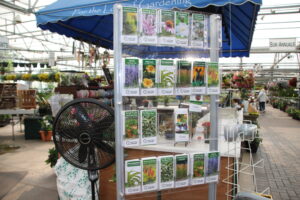


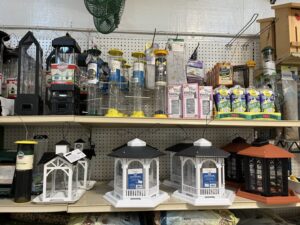
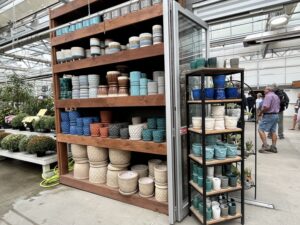

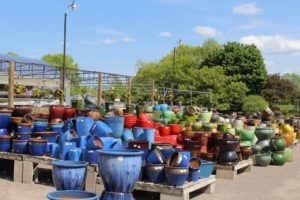
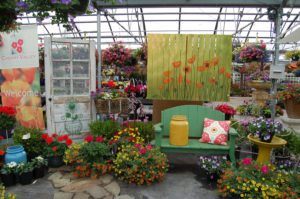


 Videos
Videos





